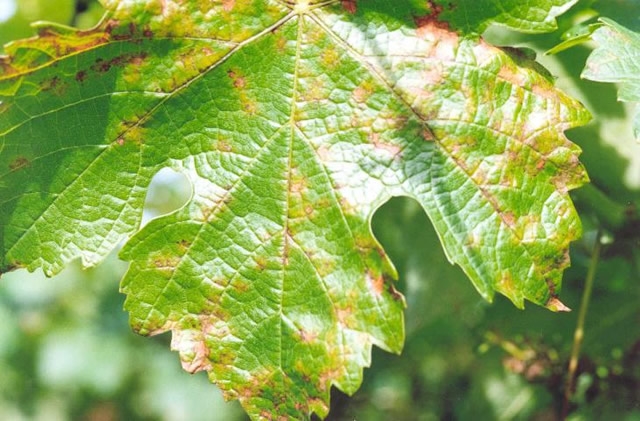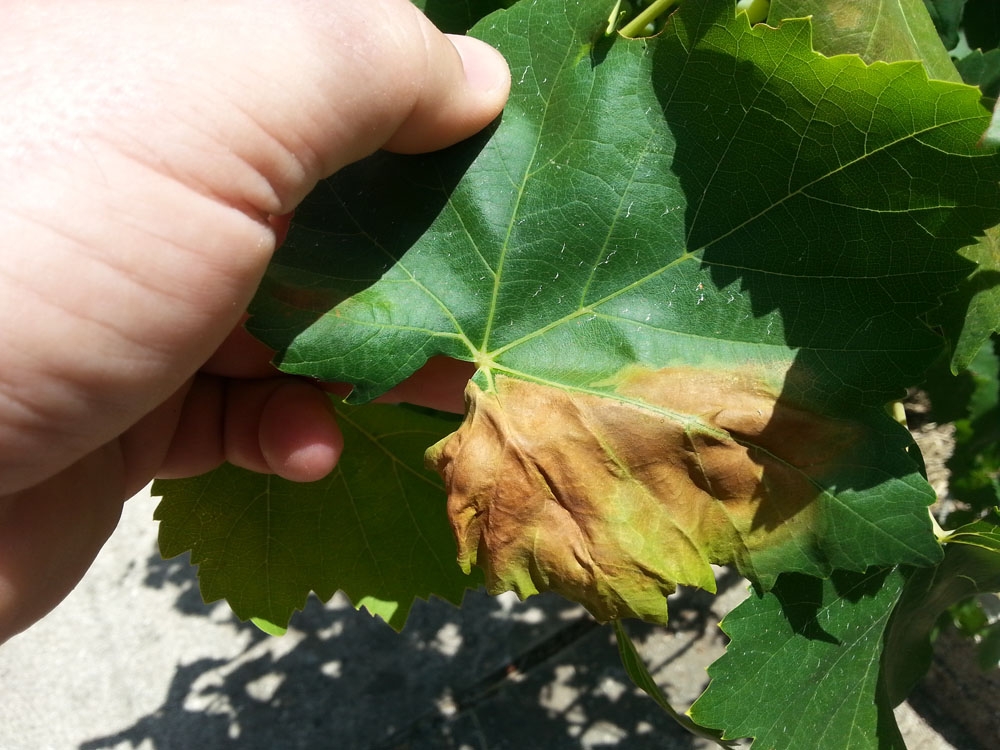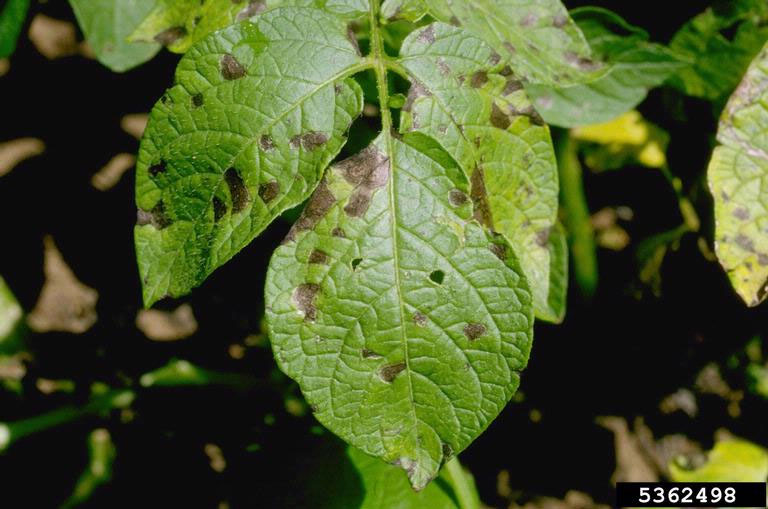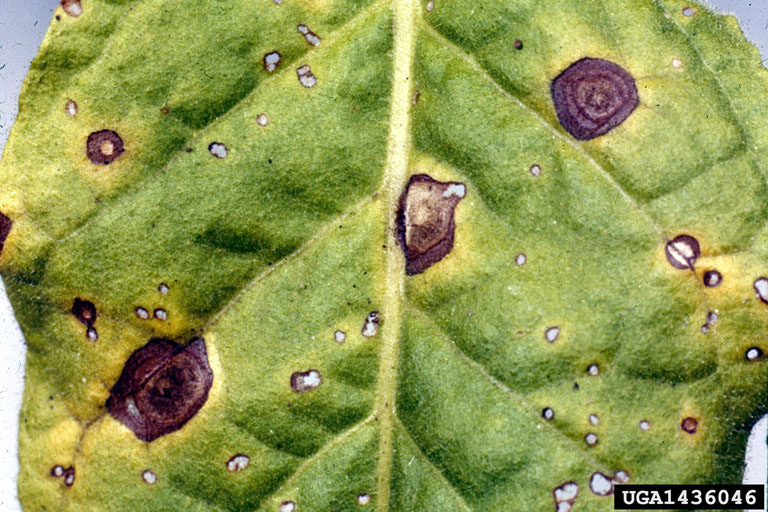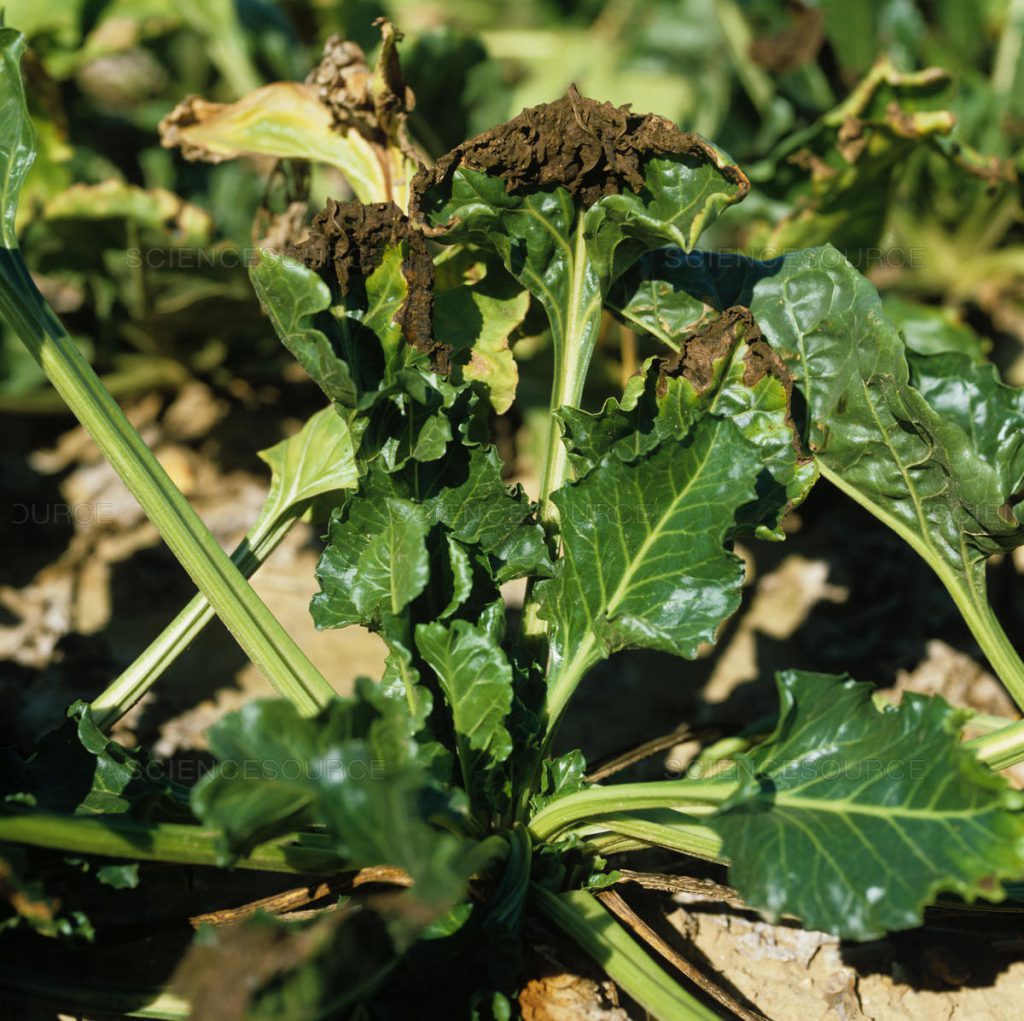Grapevine downy mildew is the most important problem in viticulture worldwide, because it can cause total destruction of production. In Greece, it appeared for the first time in 1881 in Messinia. Since then it has been endemic in Greece, threatening especially areas with high atmospheric humidity conditions (e.g. western Peloponnese).
Scientific name: Plasmopara viticola
Other name: Downy mildew
Greek name: Περονόσπορος Αμπελιού
Symptoms
All tender, green parts of the plant are affected: shoots, leaves, bunch ridges and grapes.
Characteristic light green spots, the so-called “oil spots”, appear on the leaves, which later die. The leaves are torn and in severe infestation fall off. Under conditions of high humidity, white fluff (dehiscence of the fungus’ fruit spores) is observed on the back surface of the leaves. On mature, aged leaves, the shape of the spots is polygonal. This is because the ribs of mature leaves make it difficult for the pathogen to spread, resulting in a “mosaic” appearance. This symptom is also known as “mosaic spots” or “cross-veining”.
In flowers, infection can be direct by puncture or indirect through the pedicel and with wet weather the characteristic white rashes of the pathogen appear. If infection occurs before flowering, the flowers wilt and fall off.
On rails the infection is only indirectly from the peduncle. The young ones take on a brownish-green color and are covered with exudation (fuzz) of the fungus. When they become infected later and before “polishing”, due to the growth of the fungus inside them, they become leathery, show brown sunken spots, shrivel and fall off. This symptom is known as “brown rot”.
Similar spots appear on the tender shoots, tendrils and backs of the bunches, which become necrotic.
Pathogen – Growth conditions
The disease is caused by the phytomycete Plasmopara viticola.
It is mainly spread by oospores (native form), which require a “ripening period” and free moisture (water drops e.g. due to rain or other causes) to germinate. These are responsible for primary infections, which start on shoots and leaves close to the ground. Favorable conditions for infections are when temperatures are 15-27°C, relative humidity >85% followed by rain. The pathogen infects grapevine shoot organs from the stomata and the mycelium develops in the intercellular spaces. There the fungus reproduces asexually, forming conidia. These are carried by the wind and are the contaminants for secondary infections. They infect new shoots on the same or other stumps. For infection to be successful, the leaves must remain wet for some hours, depending on the temperature.
The critical period for the development of the disease is considered to be May, because the temperature rises, the fungus completes its biological cycle more quickly and causes numerous new infections. In addition, during this period the vine is growing rapidly, resulting in the constant formation of new tissues which are susceptible to infection.
Treatment
For the treatment of grape downy mildew, applications with appropriate fungicides are recommended, in accordance with the Agricultural Warning Program, or preventively in the 3-4 leaf stage, in the “berry”, before flowering, after bunching, after 15-20 days, depending on the weather conditions and infestation pressure.
Source
www.bayercropscience.gr
Plasmopara viticola
Downy Mildew of Grapes
Tags: PLANT DISEASE • VINEYARD

